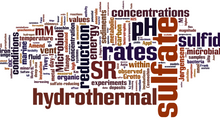Empowering the Next Generation of NHPI Scientists: A Summer of Discovery
- kianalfrank
- Aug 9, 2022
- 3 min read
Aloha, everyone! It brings me immense joy to share with you the remarkable journey we embarked on this summer, as we nurtured and witnessed the incredible growth of 11 young minds with a shared passion for science and a deep connection to our beloved Pacific Islands. This summer, we had the privilege of hosting a transformative 10-week research program at the University of Hawaiʻi at Mānoa, a program that not only honed the scientific research skills of these talented individuals but also fostered an unbreakable bond with our Pacific Island communities. Our journey culminated in a celebration of knowledge and culture at the Ulupō Heiau State Historic Site on August 5.
Exploring the Heart of Kailua's Watershed
Our spirited group of students delved into cutting-edge research within the watershed of Kailua in Windward Oʻahu. Their projects spanned an array of vital topics, including systems biology research addressing concerns voiced by the Kailua community, fishery science, sustainable agriculture systems, ecological restoration, invasive species science and management, and disease ecology. This place-based approach was designed to promote scientific learning by weaving Indigenous Pacific knowledge into the fabric of our research. It created a space for effective community engagement and inspired rich collaboration among our dedicated interns.
"As Indigenous researchers, our relationships to place, people, and our ancestors are all intricately woven into our practice, understanding, and interpretation of science," I proudly shared as the program's co-lead and an assistant professor at the Pacific Biosciences Research Center (PBRC) within the School of Ocean and Earth Science and Technology. "Our program is built on the foundation of pilina, infused with the intense intellectual rigor of learning ma ka hana ka ʻike (gaining knowledge by doing) huli ka lima i lalo (with our hands turned down) in both service and research to promote skills of kilo, pono science, and mālama ʻāina."
A Journey Fueled by Dedication and Support
The journey to become part of this remarkable program was no easy feat for our students. They underwent a rigorous application process, and I'm delighted to share that all accepted students had their expenses covered through a generous grant from the National Science Foundation. This encompassed travel costs, room and board, meals, transportation, and other project-related expenses, ensuring that nothing stood in the way of their pursuit of knowledge.
"It truly is an outstanding program which pushes us to step out of our comfort zone, to get close to nature and understand the science behind it all," shared Carlene Blailes, a program participant hailing from Guam, currently studying at Leeward Community College.
Christine Tominiko, a program participant from American Samoa and a student at UH Hilo, added, "I’ve learned that science is a big contributor to the environment, and we’ve done a lot of research this summer in order to better the environment around us."
Nurturing the Future of NHPI Scientists
Our program takes on an even greater significance when we consider the underrepresentation of Native Hawaiian and Pacific Islander (NHPI) individuals in STEM majors and careers. This underrepresentation poses significant challenges, especially as the small islands of the Pacific face disproportionate consequences of global change, including sea level rise, coral reef loss, native species extinction, and intensifying storms.
Matthew Medeiros, my co-lead in the program and an associate professor in PBRC, perfectly encapsulates our mission: "A major goal of our program is to build good Pacific Island scientists. Knowledge has to return to the communities that need it. Knowledge has to return to the places that will benefit from it. Knowledge has to return to the people who helped create it with the scientists."
Collaboration and Culture: Our Guiding Principles
Our program was honored to partner with Kauluakalana, a non-profit community-based organization dedicated to natural resource restoration in Kailua. Together, we followed culturally-informed protocols and integrated Hawaiian ways of knowing into our research endeavors. Our students worked alongside mentors from various UH Mānoa colleges and departments, including PBRC, the Center of Microbiome Analysis through Island Knowledge and Investigation, School of Life Sciences, Department of Natural Resources and Environmental Management, Department of Tropical Plant and Soil Sciences, and even the Bishop Museum. This collaborative spirit enriched our research and helped shape the goals of Kauluakalana.
"It’s so meaningful to see them grow as young scientists, but see their projects develop and go deeper down into the microbes of the projects that they’re doing on ʻāina to help revive this area," said Kaleo Wong, executive director of Kauluakalana.
As we bid farewell to this unforgettable summer of discovery, we are filled with gratitude for the opportunity to inspire and empower the next generation of NHPI scientists. Our journey continues, as we remain committed to bridging the gap in STEM representation, nurturing the bond between science and culture, and preserving the precious treasures of our Pacific Islands. Mahalo nui loa, and stay tuned for more inspiring stories from our scientific community!
Recent Posts
See AllExciting times are ahead as we join forces with Dr. Creighton Litton and the incredible team that put together a successful NSF- IRES...





















Comments